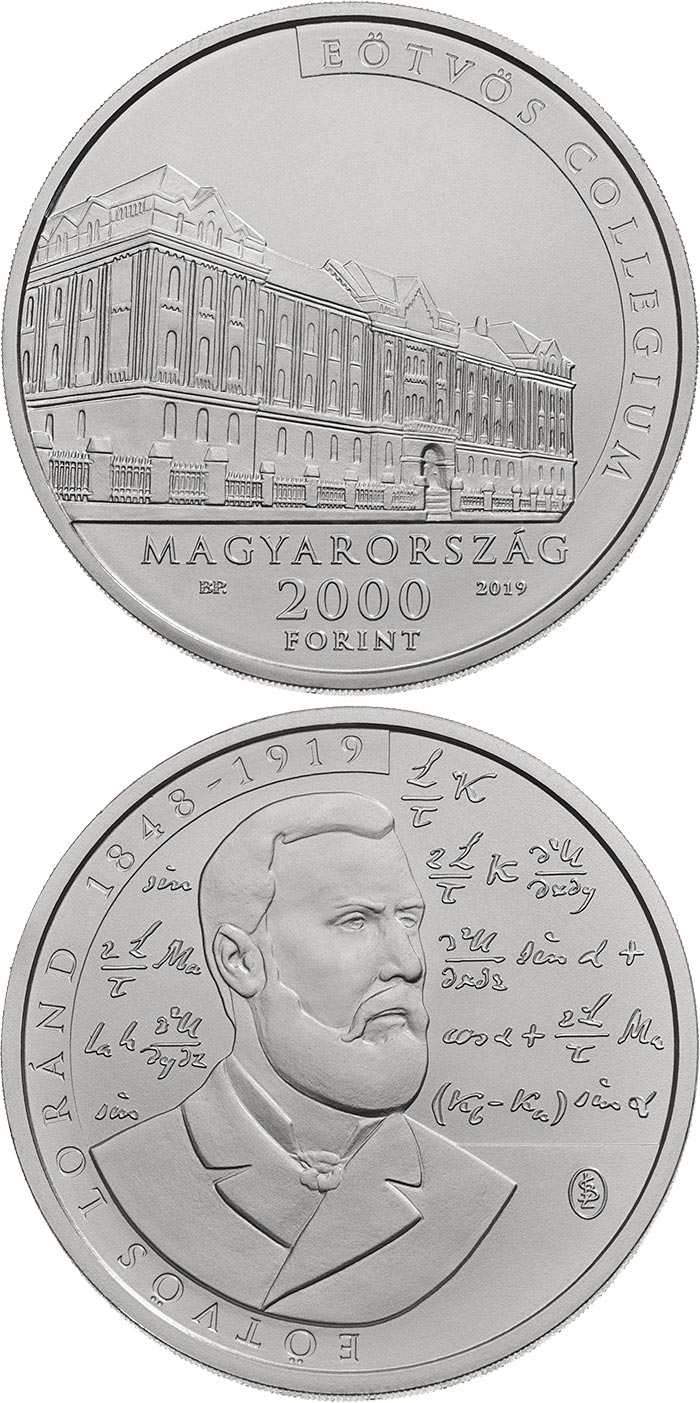2,000 forint - The 100th anniversary of the death of Loránd Eötvös
Series: Hungary - Commemorative 2000 forint coins

The MNB will issue a silver collector coin of HUF 10,000 and its HUF 2,000 non-ferrous metal version on the centenary of Lóránd Eötvös’ death. The primary role of collector coins is to educate and pay tribute, therefore they are not to be used in everyday payments. Their face value serves to preserve the value the coins represent to collectors.
With the collector coins to be issued today the Bank intends to pay homage to the outstanding figure of the 19th century Hungarian scientist community, who created the torsion pendulum, now known worldwide, to measure gravity changes in space, and by applying a theoretical approach he also recognised the relationship between the surface tension of liquids measured at different temperatures and their molecular mass, which became known as the Eötvös’ law. During his scientific career he was the rector of the University of Budapest bearing his name today, worked as Minister of Religion and Education, and also filled the position of the President of the Hungarian Academy of Sciences for 16 years. In his role as Minister of Religion and Education he implemented a public education reform resulting in the construction of 400 new schools. In honour of his father he founded the Eötvös Collegium in 1895 in order that talented students with poor financial background could also receive university education.
The silver and the non-ferrous metal versions have the same design, the only difference being their denominations. The collector coins were designed by sculptor Borbála Szanyi.
The building of ELTE Eötvös József Collegium is featured as the central motif on the obverse and offers a reference to the pedagogical aspect of Eötvös’ career. The Collegium was founded at the initiation of Loránd Eötvös during his term in office as a minister, in 1895 as a boarding school with the purpose of high-quality teacher training. The institute was unique in Hungary at the time. It was named after the founder’s father József Eötvös, the initiator of the public education reform.
The building, declared a historical memorial site, continues to be the crucial intellectual workshop of teacher and scientist training. The lettering EÖTVÖS COLLEGIUM in a legend running around the coin to the right on an elevated plane helps to identify the central motif. The elevated plane is not interrupted under the representation of the Collegium either. The compulsory design elements of collector coins are also placed here: the lettering ‘MAGYARORSZÁG’ (Hungary), the denominations 10,000 and 2,000 ‘FORINT’ broken in two lines, on the left of the denomination the ‘BP.’ mint mark, and the mint year 2019 on the right.
The thematic side presents the scientist and inventor. The portrait of Loránd Eötvös in a decorative style was inspired by a photograph from 1891-92. In the background of the portrait, a series of formulas describing the four characteristic quantities of gravitational pull changes in space are shown in Eötvös’ handwriting. These can be measured using his invention, the Eötvös torsion pendulum. The structure of the reverse is identical with that of the obverse: The lettering EÖTVÖS LORÁND 1848-1919 (his date of birth and death) is placed in a legend to the left on an elevated plane. The master mark of sculptor Borbála Szanyi, the designer of the coin, is shown on the uninterrupted elevated plane under the portrait.